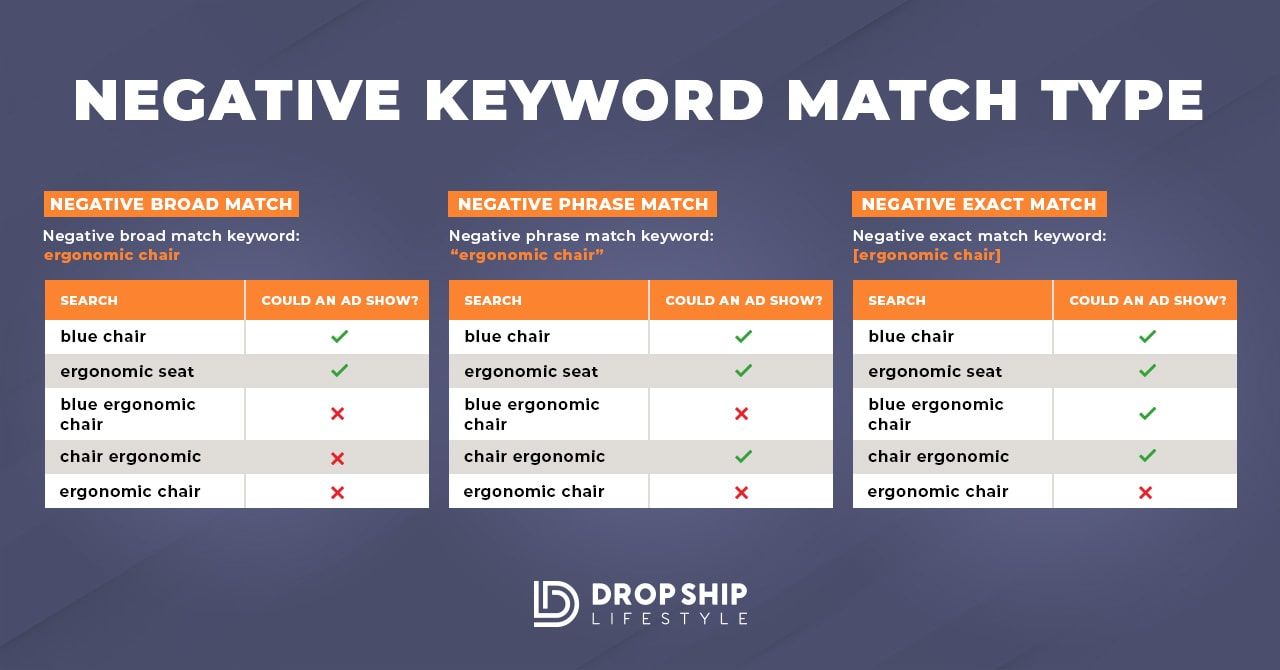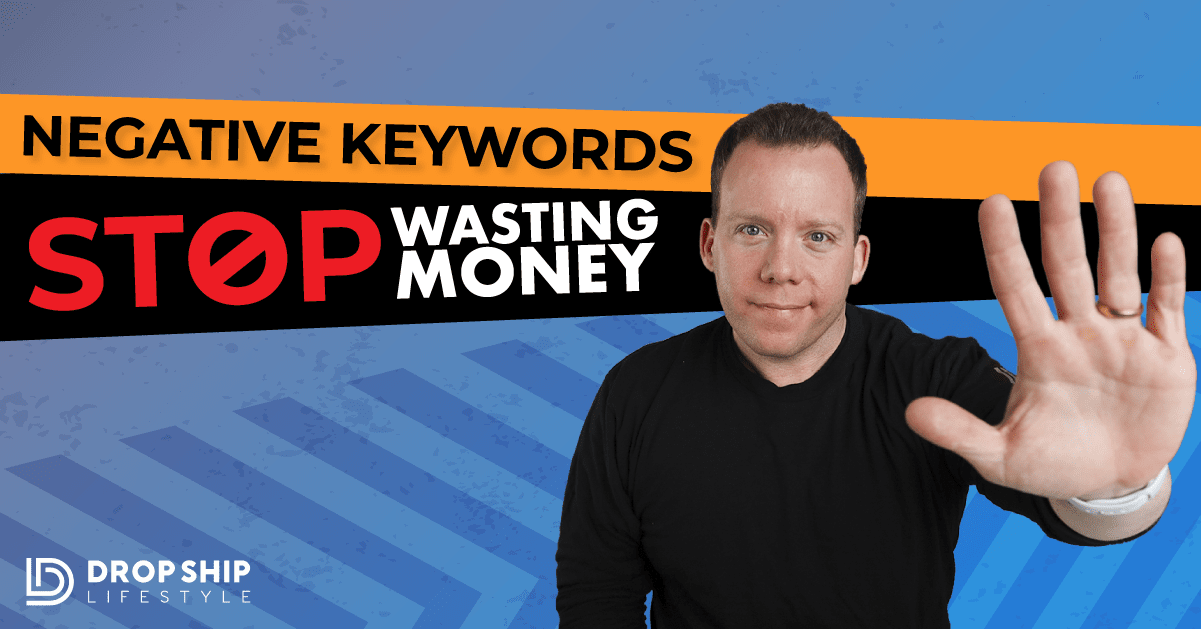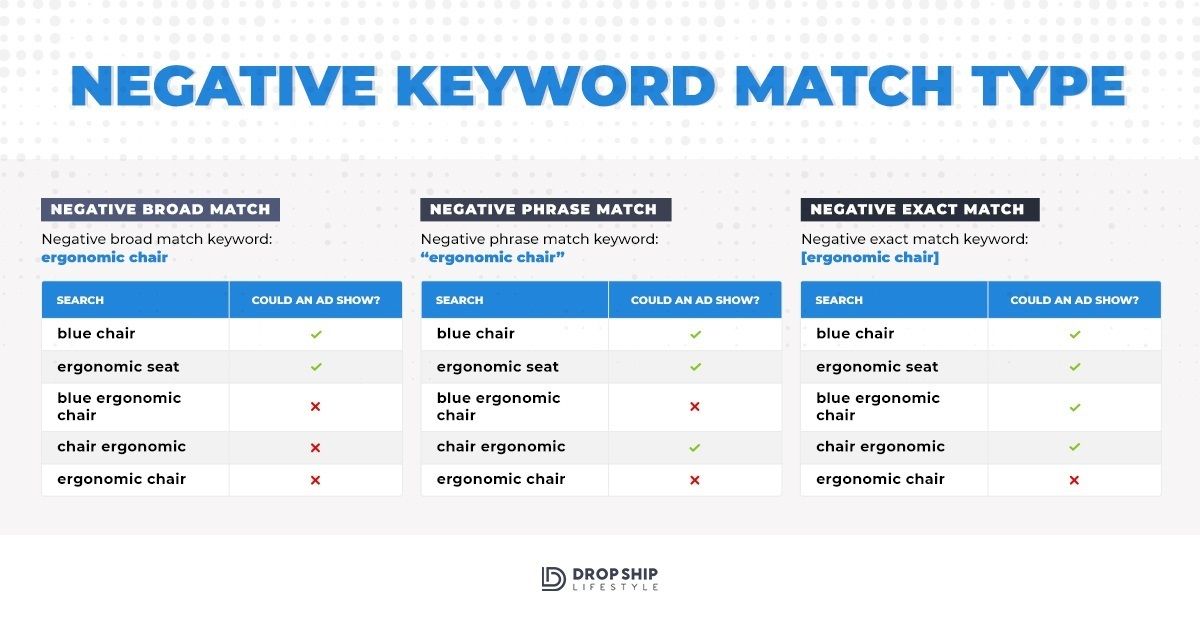Building a successful Pay-Per-Click Strategy isn't simple. It involves quite a bit of trial and error. By nature, every Pay-Per-Click campaign is going to have Positive keywords. But every good Pay-Per-Click Campaign should also have Negative keywords too.
Negative keywords are an often-overlooked step in creating a high-quality campaign. Failing to specify your negative keywords can easily lead to bidding on searches that you don't want and running through your budget prematurely.
Read along as we cover your best bets for using these keywords in your campaigns.
This blog post is also available in a video format. Click "Play" to start watching and don't forget to subscribe to our YouTube Channel for weekly updates and insights!
How are Negative Keywords Different from Other Keywords?
Choosing the right keywords is a pivotal step in making sure your advertising budget is only spent on relevant search queries in which the people searching are truly interested in your specific product or service.
A PPC campaign that hasn’t been optimized with a good keyword list will not only result in poor results, but Google or Bing will charge you for that bad feedback on future campaigns, too. More specifically, if your campaign results in a high bounce rate (people leaving your site without taking any other action), the bid price for your targeted keywords will also increase.
Besides search engines, you can apply these techniques with many marketplaces, such as Amazon.
To best match your audience’s intent, deliver better campaign results, and keep your ad spend in check, your keyword list should contain both positive and negative keywords.
Positive Keywords
Positive keywords are those that are carefully chosen to align with your target audience’s search intentions. In other words, these keywords or keyphrases should closely match your target audience’s search queries.
For example, if your business sells mid-century modern ball chairs, some of your positive keywords may include “ball chairs” and “modern ball chairs” among others.
Negative Keywords
Alternatively, negative keywords refer to words or phrases that may relate to your targeted campaign, but for which you would not want your advertising dollars to be spent on because they do not apply to your brand or offerings.
Using the same example above, a search query such as “ball chairs for sale” could produce results that include a multitude of irrelevant results such as ergonomic ball chairs, fitness balls, and more. In this case, you might consider adding “ergonomic” or “fitness” to your list of negative keywords so you don’t waste your advertising dollars on low-quality searches and deliver ads to uninterested people.
Using Negative Keywords in Your PPC Campaigns
Once you’ve completed your keyword research, you’re ready to dive deeper into creating your PPC campaign. To put your negative keywords to good use, decide how they’ll best be used in future campaigns.
While every business’s goals are unique, a good starting point to optimize your keyword list is to consider the two categories of negative keywords: campaign level keywords and ad group level keywords. The best PPC strategies use both of these tactics together to make an airtight campaign.
Campaign Level Keywords
Campaign level keywords, often referred to as universal keywords, are those that are set at the campaign level inside each ad account. These keywords get their “universal” term due to the understanding that they are words or phrases that you would never want your ads to appear for. Common universal negative keywords you might use are:
- Free
- Cheap
- Download
- Repair
Referring to the previous ball chair example, you’d likely add “ergonomic” to your universal negative list as your product will never relate to that term under any circumstance. In other words, someone searching for ball chairs who has the intent to purchase an ergonomic product would not be interested in your mid-century modern ball chair. Consequently, your ad spend would increase and you’d have no sale or conversion to show for it.
Ad Group Level Keywords
Ad group level keywords are defined at the ad group level, which lies inside the campaign. Within your ad structure, every negative keyword set at the campaign level will also apply to any ad groups within that specific campaign.
Ad group negative keywords are the perfect opportunity to get more specific with your targeting. You can create several ad group levels, so be sure to take advantage of creating a few ad sets or variations to differentiate your targeting.
Using the same ball chair example, you may sell both blue ball chairs and red ball chairs. Knowing this, you would create two ad groups: one for red ball chairs and another for blue ball chairs. To make sure someone searching for red ball chairs doesn’t see an ad for blue chairs, you should add the term “blue” to your red ad group, and vice versa.
In addition to any ad group level keywords you choose (red and blue), your previously defined universal keywords (free, cheap, etc.) will also be applied to each ad group.
Keyword Match Types
There are three different types of keyword matches that you can apply to your negative keywords: broad, phrase, and exact.
Broad will look for the negative keyword in any order in a search query. Phrase will look for the keywords in the same order that they appear. Exact will only restrict ads that are exactly the same as the negative keyword phrase, no additional keywords or in any alternative order.
The image below illustrates these three match types:

Monitoring Your Campaigns
Defining your keyword list is only half the battle in setting up a stellar PPC campaign. Once you’ve put your keyword research to the test and turned your campaigns on, be sure to regularly check on their performance.
Keyword trends change quickly and frequently, and it’s important you revisit your live campaigns to see which keywords are triggering your ads so you don’t overspend or even miss out on other valuable keywords.
Adjusting Your List of Negative Keywords
Do your best to check in on your campaigns every week and expect to make changes to your negative keywords – set both at the campaign and ad group levels. After all, even the best keyword lists need frequent adjustments.
Strengthen your keyword research by staying up-to-date on new trends in your industry as new keywords can develop over time. Additionally, check to see what your competitors are doing. Does it seem like they’ve switched up their previous tactics? Are they possibly bidding on a new keyword you aren’t using? The more in-depth you are with your research, the better results you’ll see.
While monitoring your keywords may seem like a tedious job, keep in mind your hard work will surely pay off. As you continually adjust your keyword list, your targeting will become stronger over time, your click-through-rate will improve, and you’ll likely increase your conversion rate, too.
Steering Your Future Campaigns to Success With Negative Keywords
Your PPC results are largely impacted by your efforts, so keep the following at the forefront of your next brainstorm session as you refine your methods:
- Understand the difference between negative keywords and positive keywords
- Set universal negatives as well as multiple ad group negatives to specify your ads
- Monitor your results regularly to keep your ad spend in check
- Adjust your keyword list frequently to stay updated on new trends and developments
No PPC campaign is ever truly finished – there's always more research to be done and more ways to improve your targeting. But with these guidelines in place, you’ll have the knowledge and skills to continuously improve your paid advertising strategy and get the most bang for your buck!




Hey Everyone,
As many of you already know I created Drop Ship Lifestyle after selling a network of eCommerce stores and then trying to find a community of other store owners to network with… What I found was a bunch of scammers who promised newbies they would get rich quick by following their push-button systems!
This led me to create a new community along with an online training program that shares how to build a REAL online business.
I’d love to hear what you think… it’s a 2.5-hour training designed to help you drop ship profitably… all for free.
Be sure to click here to check it out and send me your feedback!
If you go through the “How To Start & Grow A Hyper-Profitable Online Store” webinar and still have questions just contact me and I will help you out.